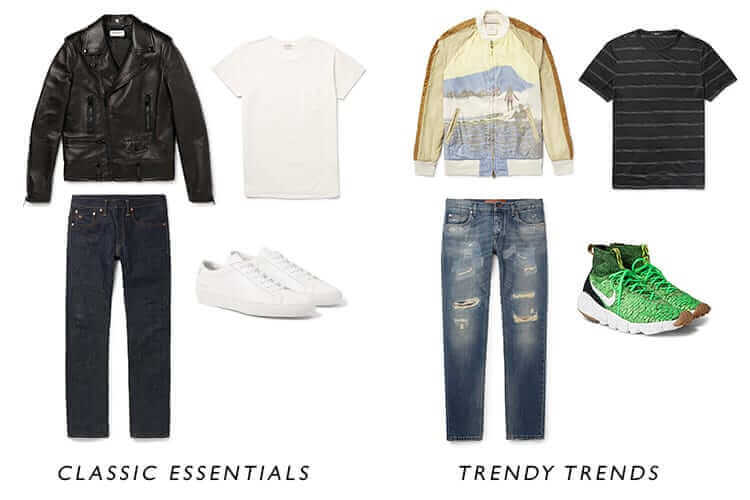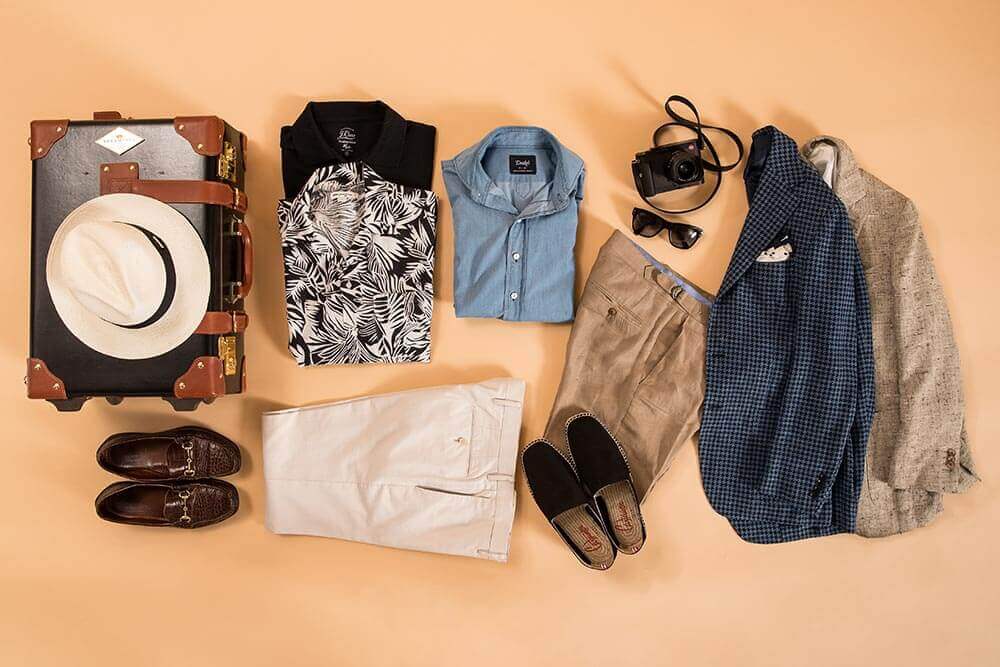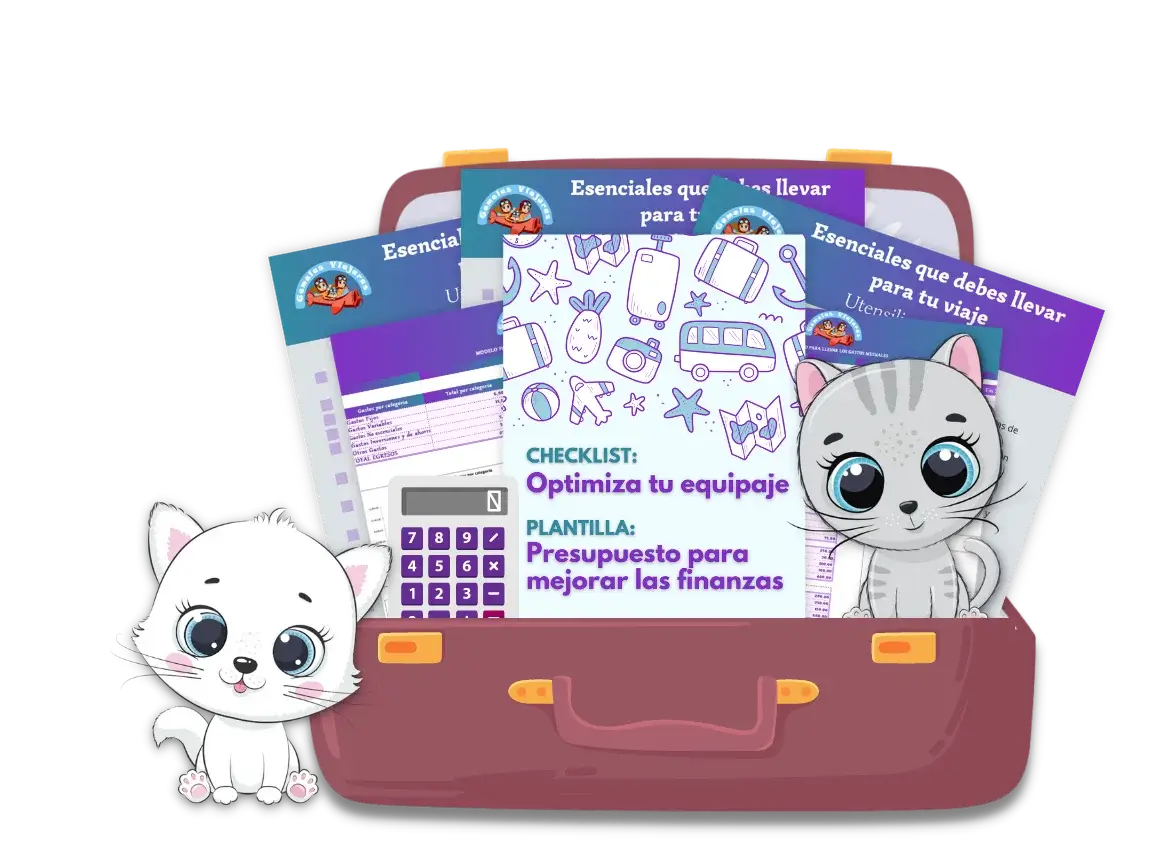After our article last week on the feminine travel capsule wardrobe, we could not leave the gentlemen like the guayabera: on the outside.
In this week’s article we’ll cover men’s travel wardrobe essentials and strategies. Style and convenience in one package.
The basic strategy is pretty simple: Instead of packing out of your closet every week, pack from a small list of things that can withstand the rigors of travel. Then, take them to a carry-on in a couple of minutes and what you pack gives you enough versatility – that you can reuse it for weeks without repeating an outfit.
The capsule wardrobe: 12 garments
We already explained in the previous article what a capsule wardrobe is.
Regarding the men’s wardrobe, we will take as a basis a number of garments limited to 12.
We won’t tell you here that if you have 15 items in your travel wardrobe, you’re doing it wrong, but thanks to the space requirements of a carry-on suitcase, we’ll stick pretty to the core idea, and a dozen will be our rule of thumb. .
It’s time to get into the real process of building your own travel capsule. It only takes five simple steps and about 45 minutes, starting with one step you already know: packing as you normally would.
STEP ONE: Gather clothing options for one week
Let’s start by packing for a week-long trip. It includes work clothes, sports clothes, underwear, leisure clothes, etc. Everything you might need for a week.
Do this quickly and don’t overthink it. Take a look at the “overpacking”. Even: give yourself a few options: some backup garments, some things you may or may not need, whatever.
We will reduce the volume significantly in the next step, and it is better to start the editing process with too much more than too little.

STEP TWO: Eliminate redundancy
In this step, you will keep most of the clothes you just removed in your closet, based on three criteria: everything that you put away must be:
- Durable
- Versatile and
- Fit in a single tote bag.
Everything you save must meet these three rules. We’ll go over each one before making other recommendations on what is worth keeping and what should stay at home.
RULE ONE: Durable
The advice here is similar to any “build the core of your wardrobe” advice: if it doesn’t last, don’t bring it. Choose things that resist abuse well. If you travel regularly, you will be wearing these clothes as often as twice a week, and that means this is not the time for that fine mother-of-pearl button down shirt from Scutaro.
Take out all your fashionable clothes too. You want items that will literally stand the test of time, but also classic pieces that are unlikely to go out of style anytime soon.
The trick of a little mix-and-match travel pod is to look well dressed but inconspicuous. This means keeping flashy patterns, bold colors, and trendy cuts to a minimum.

RULE TWO: Versatility
Start making outfits. Pair a shirt with pants with shoes and repeat until you’ve been through everything you’ve got.
Everything should go with everything else. All shirts must match all pants and must match only one belt and shoe color choice.
Could you put on the shirt and sneakers you brought to the gym with those khaki pants? Questions like that are the secret to true wardrobe minimalism.
Think of it as a matching game: start matching groups of items and then add each one until you have groups that go well with each other. Start with items like blazers or suits.
We recommend neutral colors: brown / tan, gray, navy; brown shoes and belt – or monochromatic – black, white, gray; black shoes and belt, just because it makes matching game easy, especially when it comes to dress shoes and a belt.
Adding a single not-too-strong accent color to any of those base palettes, like a burgundy or forest green, works great too, especially if you have multiple pieces of clothing (i.e. a shirt and sweater) that are different shades. of that same accent color.
RULE THREE: Everything must fit in a handbag
Now you should have a completely interchangeable travel wardrobe, or potentially several. Cut it up until what you have fills 3/4 of your carry-on bag.
If you are more than 3/4 full, you haven’t finished editing properly yet. And it’s not about “3/4 full when I roll everything up tight and pack it perfectly.” 3/4 of the capacity when everything is quickly folded and thrown into the bag.
If you have to spend an additional 5 minutes carefully rolling and organizing everything, you are not going to be successful.
I’m on the point of building a versatile, minimalist, and easy-to-manage wardrobe.
When deciding what to take out, think about having a little less of each item than you would normally need for a week. It’s usually easier to put on a pair of pants or a pair of shoes, but swapping (for example) two plaid shirts for a single-colored one that can be worn twice is also an option.
From a volume perspective, this should look like this:
- 2-4 pairs of pants
- 2-4 shirts or polos
- 1-2 pairs of shoes
- 1-2 belts
- 1 sweater
- 1 jacket
- In addition to a pair of T-shirts, underwear, socks, sportswear, a waterproof jacket, etc.
We won’t go too far here, but it’s worth spending a little extra time and money to get a good suitcase that’s exactly the maximum size your preferred airline allows.
Speaking of cases, we prefer ballistic nylon cases with two skate-sized wheels over rigid models with small four wheels, because they expand slightly, resist damage better, and on the best ones, the two-wheel configuration allows more space. for the clothes.
A few more tips to eliminate redundancy
Here are some additional tips.
- Layering is your friend
- A heavy coat is bulky and unpleasant to carry, and unless your destination is below zero, a sweater and blazer would be best worn separately on cold days and together on cold days.
- When you go to places where it is very cold, you can complement this with a thinner layer that can easily cover one or both of the other layer pieces.
- Choose things that can be dressed from top to bottom
- Dark jeans, khakis, and toe and / or brooch derby shoes have equally versatile properties over things like flannel pants and more formal oxfords.
- Choose the space
- All things being equal, choose what takes up the least space.
STEP THREE: Add accessories

Accessories provide uniqueness, variety and originality without taking up a lot of space in your suitcase: it takes much less space to always carry two weeks of unique accessories than two weeks of shirts. Also accessories can hide the fact that you’ve been wearing the same jacket all week.
Ties, pocket squares, watches, colorful socks, and a colorful woven belt are great options, and if you’ve got the space, this is the time to even add back a statement piece of “can only be worn once a week. “Like a pair of red nantucket chinos or a fun patterned shirt.
Try not to fill the rest of your suitcase with accessories just because you can. You’ll still need some space for a toiletry bag, and it’s nice not to have a suitcase full to the brim, if only so you can toss everything into it without carefully folding it at the end of a long week.
STEP FOUR: Eliminate Redundancy, Again
That’s right, step four is doing step two again. You should now have a preliminary capsule wardrobe in front of you. Put it all in the suitcase one more time, along with your toiletries, chargers and other things you can bring, to make sure everything fits with room to spare.
If not, go back to step two. Even if it does, consider everything carefully as a complete set and try to eliminate 1-3 things for the sake of true minimalism and versatility. If you can’t, that’s fine, but don’t miss out on this step. The exercise itself is worth it.
Some guiding questions while you examine your suitcase
Do you really need dress shoes? Or can you get away with a pair of athletic shoes that can be worn with jeans?
Would the space that that fourth pair of pants occupy be better served by a second sweater or jacket?
Are there any substitutions you can make that help make this collection a more cohesive ensemble?
Is it an adequate level of formality?
Do you have enough socks and underwear, enough for a standard trip of plus a day? Or did you forget to include them in your initial step? If you need to add them, do you need to remove anything to make room?
STEP FIVE: Check regularly
Technically speaking, after step four, you have a complete capsule wardrobe ready to take on your trip. But you may not have the right one for all your business travel needs, and the only way to find out is to travel with it.
Before setting out on your first trip, make a quick list of everything in your travel bag. This will serve as a time-saving checklist for the next time you pack and the reference document that you can use to update your collection as needed.
Then the next time you have to pack for a trip, ask yourself: what worked? no. Did you have enough of everything? Didn’t you wear something, I know is it because you packed too much or because you really don’t like that thing?
Conclusions
Maintaining and updating this wardrobe should be an ongoing, but simple process. The point is not to never have the package back, it is to be able to make all these changes in 3-5 minutes while putting things in your suitcase because you have a standard set of decisions that is slowly evolving.
And not only that. This has helped us edit our wardrobe.
If something stays in our closet for more than 12 months without being used, it goes directly to a donation container.
Just remember this magical question: Can I get away with it without having this? It is a much better question to ask yourself than to affirm “this might need it some day”, to justify saving things that we will never use.
Thoughts? Questions? Leave a comment below!
